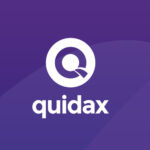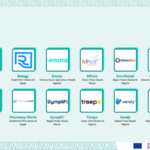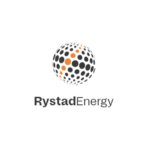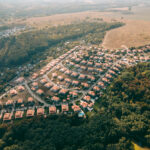ENTERTAINMENT
D’BANJ NET WORTH, AGE, EARLY LIFE, CAREER AND SONGS
D’BANJ NET WORTH, AGE, EARLY LIFE, CAREER AND SONGS
Daniel Oyebanjo, popularly called D’Banj or the Kokomaster, is one of the most famous and influential musicians in both the Nigerian and African entertainment space for decades now. The extraordinary artiste is known for releasing exceptional tracks that are known to turn into club bangers and serve as sweet melodies to the ears. Kokomaster is a great lyricist and is one of the most celebrated musicians in Africa. He is an afrobeat and Afropop musician who has several endorsement deals with different companies and corporations. All his musical arts, endorsements, and business endeavors all contribute to his networth today.
Before we proceed to discuss D’banj’s networth in 2020, let’s highlight his biography, age, early life, career, and songs.
Fast Facts about D’Banj
| Stage Name | D’Banj, Kokomaster, Bangalee |
| Place of Birth | Zaria |
| Occupation | Musician, singer, songwriter, rapper, entrepreneur and television personality |
D’banj Biography and Early Life
D’Banj was born on June 9th, 1980 in Zaria, northern Nigeria to a military officer and a businesswoman who’s if from Shagamu, Ogun State. Due to his father’s occupation, the family moved around a lot while he was growing up, and eventually, the father moved to England.
The famous artiste was expected to follow his father’s footsteps and join the military. He was enrolled in the Nigerian Military School at a young age, but he aspired to be a musician. His love for music being so deep in him, he struggled to convince his parents to allow him to pursue his dream. He was introduced to his favorite instrument, the harmonica, by his late older brother, Femi Oyebanjo.
The star musician briefly studied mechanical engineering in a university in Lagos but had to drop out due to constant strikes and other challenges. He moved to London to complete his degree.
While in London, D’banj met with his future business partner, Don Jazzy, who was then an aspiring producer and songwriter. The two worked together, relocated back to Nigeria in 2004, and released a song titled, “Tongolo.” Tongolo enjoyed massive airplay from DJs, radio and television channels, and the duo formed the Mohit’s Record, which later had members like D’Prince, Wande Coal, Dr. Sid, and Kayswitch.
D’Banj Career
As a tribute to his mentor, D’Banj uses a unique fusion of Afrobeat and Afropop in his music. His songs are often dosed with humor and are always based on his life. He performs in Yoruba, English, and Pidgin and highlights the struggle of a young Nigeria trying to achieve his dreams in most of his tracks.
He released his debut album, No Long Thing, in 2005. The album had many tracks, with Tongolo being the lead single. The album was a hit and gave him his breakthrough and Koko Master personality, with the term Koko meaning varieties of things. His success led to collaborations with top artists then including Dare Art Alade and Ikechukwu.
He released his second album, Rundown Funk U Up, in 2006, and the album featured several singles, including the single Tongolo (Remix) and the lead single, Why Me, which proved to be another hit to his name. With the period of 2007-2008, D’Banj and his fellow Mohit’s members released their joint debut album, Curriculum Vitae. He went ahead to release another solo album, The Entertainer, with singles like Gbono Feli Feli, Entertainer, and other hit songs.
Fast forward to June 2011, D’Banj was signed to Kanye West’s G.O.O.D Music record label as an artiste. However, in September 2016, it was announced that the star musician left the label.
At a time, Mo’Hits broke up, and he formed his own record label, DB Records. He signed a mega-deal with Sony in December 2012, and ever since then, his career has been growing steadily.
D’Banj Songs
Some of D’Banj’s Songs include;
- Agidi
- All The Way
- Baecation
- Blame It On The Money (feat. Big Sean & Snoop Dogg)
- Booty Call
- Bother You
- Celebrate Ft. Wande Coal
- Comment Ca Va
- El Chapo
- Emergency
- Entertainer
- Fall In Love
- Feeling The Nigga
- Gbono Fe Le
- If You Dey Crase ft K-Switch
- Igwe
- Ika O Da
- Issa Banger
- It’s Not a Lie
- Iya Mi
- Kimon
- Loke
- Mo Cover Eh
- Mo Gbono Feli Feli
- Endowed
- Olopa
- Ntswempu
- Oliver Twist
- Olorun Maje
- Pastor
- Shake It (feat. Tiwa Savage)
- Shy
- Socor
- Something for Something (feat. Casper Nyovest)
- Suddenly
- Tongolo
- Top of the World
- Turn Down For What (Focus)
- Why Me
- Witches
- With You
D’Banj Networth
D’Banj, over the years, has gathered much wealth from all his sources of income, including songs, endorsements, deals, and business. He is heavily engaged in the telecommunication industry and is reportedly making a fortune out of his telecom investments.
Currently, D’Banj’s Networth is estimated at over $10 million, according to Forbes. He’s really worth a fortune.
More from my site
EDUCATION
Augmented Reality In Education

Augmented Reality In Education
With the rapid advancements in technology, augmented reality (AR) has emerged as a promising tool in various fields, including education. Augmented reality overlays digital content onto the real world, creating an immersive and interactive learning experience. This article delves into the possibilities offered by augmented reality in education and addresses the limitations that need to be considered for its effective implementation: AUGMENTED REALITY IN EDUCATION: EXPLORING POSSIBILITIES AND ADDRESSING LIMITATIONS.
AUGMENTED REALITY: What It Is And How It Applies To Education
A technique known as augmented reality (AR) enhances a user’s experience of reality by superimposing digital content such as pictures, movies, or 3D models over the physical world. By seamlessly integrating virtual objects, data, or imagery into the real-world environment, it improves a user’s perception of reality while also generating an immersive and participatory experience.
The programs Among the many industries that use augmented reality are education, gaming, entertainment, healthcare, architecture, engineering, and manufacturing. The way we study, work, and engage with the world around us is changing as a result of augmented reality’s (AR) capacity to improve visualization, offer experiential learning, and create dynamic and immersive experiences.
The essential elements of AR include:
- Real-time Interaction: AR enables real-time communication between digital and physical elements. It tracks the user’s position, motion, and gestures using sensors, cameras, and other tracking technologies, enabling real-time placement and manipulation of virtual items.
- Virtual Overlays: AR adds digital content to the real world, such as text, photographs, movies, 3D models, or animations. Smart gadgets like smartphones and tablets may display these overlays. or using wearable technology, such as glasses or a headset.
- Spatial Mapping: With the help of AR technology, the physical environment is mapped and understood, resulting in a digital depiction of the actual environment. This enables a realistic and seamless integration of the virtual and real aspects by allowing virtual items to be positioned precisely in relation to the user’s physical space.
- Context-awareness: To deliver pertinent and customized experiences, AR systems can analyze and understand contextual data, such as location, time, or user preferences. By doing this, you can be confident that the virtual material is relevant to the user’s situation and improves their comprehension of or engagement with the environment.
- Immersive Experiences: By placing virtual items in the real-world environment, which users may investigate, alter, or engage with, AR immerses consumers in an interactive and captivating experience. By blending the physical and digital worlds, this gives a feeling of presence and reality.
- Dynamic Content: Depending on the user’s activities, inputs, or external stimuli, AR content may change or adapt. Since virtual elements can react to human inputs or set off particular behaviors in real time, personalized and interactive experiences are made possible thanks to their dynamic nature.
Possibilities of Augmented Realities in Education
Its applications in education are quickly growing, opening up new possibilities for immersive and interactive learning experiences. How AR connects to education is as follows:
- Improved Visualization: AR enables students to interact with and enjoy complicated ideas and objects in new and exciting ways. For instance, a 3D model of the human body can be projected for use in anatomy lessons using augmented reality. modify and analyze from several perspectives to make the material simpler to comprehend and remember.
- Experiential Learning: AR delivers engaging, authentic experiences that encourage analytical thinking and problem-solving. For instance, using augmented reality (AR), history students can digitally visit historical sites, seeing events or investigating items that are not present in their immediate surroundings. This kind of experiential learning encourages involvement and memory retention.
- Gamification Of Learning: AR can be used to turn educational content into interactive games, encouraging students and making the learning process more fun. AR encourages active engagement and assists students in developing abilities through immersive experiences by including gamified components, such as quizzes, challenges, or rewards.
- Collaborative Learning: Using augmented reality (AR) technology, students can engage and Live experiences are exchanged. For instance, students can collaborate on a joint AR project to develop their problem-solving, cooperation, and communication abilities.
- Accessibility And Inclusivity: AR offers a welcoming learning environment that accommodates a range of learning preferences and skills. It can engage students who have varied learning preferences or special needs by presenting information in a variety of formats that accommodate multiple sensory modalities. AR can also provide spoken instructions or translations to help non-native speakers of a language or people who have language problems.
- Closing The Knowledge Gap: AR can provide “real-world” experiences into the classroom, closing the knowledge gap between academic understanding and practical application. It encourages hands-on learning by enabling students to mimic experiments, go on virtual field trips, or practice skills in a safe setting.
- Individualized Education Experiences: AR may adjust to each student’s needs, offering individualized feedback, direction, and relevant content. Each student will have a suitable educational experience thanks to its ability to monitor student progress and change the challenge level accordingly.
Limitation And Challenges of Augmented Reality In Education
Although augmented reality (AR) has a great deal of potential for education, it also has some restrictions and issues that need to be resolved. A few of these are:
- Cost and Accessibility: Specialized gear and software, such cellphones, are frequently needed for AR technology. tablets or wearable technology, which can be pricey and difficult for every kid or school to obtain. A digital divide can be created by unequal access to AR devices, which would restrict the use of AR in educational contexts.
- Technical Requirements: AR applications rely on cutting-edge technologies including tracking systems, computer vision, and spatial mapping. These technologies might need powerful gear and a steady internet connection, which might not be offered in all learning situations. AR applications might have slowness, system failures, or compatibility concerns, which would make them less efficient.
- Content Development: Producing top-notch augmented reality educational content can be a time- and resource-intensive process. It calls for both subject-matter competence and a command of AR. coding languages and development tools. For teachers and instructional designers, creating accurate and interesting content that fits with curriculum objectives can be difficult.
- Pedagogical Integration: Although augmented reality (AR) can improve educational experiences, it must be successfully incorporated into pedagogy. In order to effortlessly integrate AR into their courses and match it with learning objectives and assessments, teachers must have a thorough understanding of how to do so. For educators to fully utilize AR’s potential, adequate professional development and training are required.
- Privacy and Safety Concerns: AR applications often collect and process user data, including location and personal information. Safeguarding student privacy and maintaining secure data storage and transmission are critical considerations that need to be addressed by AR developers and educational institutions.
- Cognitive Demand: Using AR provide information in a rich and visually interesting way. The cognitive ability of students may be overloaded by an excessive amount of digital information or complicated visual overlays, resulting in poorer learning outcomes. For learning to take place effectively, it is crucial to create augmented reality (AR) experiences that balance cognitive load and immersion.
- Ethical Issues: AR raises moral questions about user permission, data protection, and the possibility for distraction in educational settings. These ethical issues must be addressed by educators and developers in order to ensure the responsible and ethical usage of AR in educational contexts.
Solutions To The Challenges
There are several potential solutions to the limitations of augmented reality (AR) in education. Some of these solutions include:
- Improving Hardware: One limitation of AR in education is the requirement for specialized hardware, such as headsets or smartphones. Technology companies can continue to develop more affordable and accessible AR devices to make them more widely available to students and schools.
- Enhancing Software And Content: Another limitation is the availability of high-quality AR educational content. Investing in the development of engaging and educational AR applications, simulations, and experiences would enhance the effectiveness of AR in classrooms.
- Integrating AR With Existing Curriculum: To maximize the impact of AR in education, it is important to align it with existing curriculum and learning objectives. This can be achieved by collaborating with educators to design AR applications that directly supplement and enrich learning materials.
- Training Educators: Many teachers may have limited knowledge or experience with AR. Providing training programs and resources to educators can help them effectively integrate AR into their teaching methods and leverage its capabilities.
- Collaborative And Interactive Experiences: AR technology can enable collaborative and interactive learning experiences, which can help overcome the limitation of individualized learning. By encouraging collaboration and group activities through AR applications, students can learn from one another and engage in shared experiences.
- Expanding Access And Equity: Ensuring equitable access to AR technology and content is a crucial solution. Implementing initiatives to make AR technology available in underprivileged or remote areas can bridge the digital divide and provide equal opportunities for all students.
- Continuous Research And Development: AR technology is constantly evolving, and ongoing research and development are essential to address limitations. By investing in research and seeking feedback from educators and students, developers can refine AR applications and make them more suitable for educational purposes.
Conclusion
By changing the learning process into an immersive and interactive one, augmented reality has the power to completely reinvent education. For successful implementation, it is essential to overcome the restrictions and difficulties related to its adoption. We can make use of augmented reality’s potential in education while assuring its secure and efficient application by investing in infrastructure, training educators, and encouraging responsible AR content production. See!
More from my site
BANKING
Foreign Direct Investment in Nigeria: Opportunities and Challenges

Foreign Direct Investment in Nigeria: Opportunities and Challenges
Foreign Direct Investment (FDI) is a crucial driver of economic growth and development worldwide. It entails the allocation and investments of capital, technology, and expertise from one country to another to foster economic progress through various means. Nigeria, one of its largest economies in Africa, has a set of significant opportunities and unique challenges for foreign investors. Let’s take a look into the specific opportunities and challenges that foreign investors might face when contemplating FDI in Nigeria: Foreign Direct Investment in Nigeria: Opportunities and Challenges

Foreign Direct Investment in Nigeria: Opportunities and Challenges
Opportunities in Foreign Direct Investment in Nigeria
Let’s look into how foreign investors have leveraged Nigeria’s opportunities in various sectors.
Abundant Natural Resources
Nigeria is blessed with abundant natural resources like oil, gas, solid minerals, and arable land which makes it an attractive destination for foreign investors looking to tap into these resources. Nigeria is one of the world’s largest oil producers, and for decades, its energy sector has traditionally attracted significant foreign investment and companies like Shell, ExxonMobil, and Chevron that invest in exploration, production, and the development of oil and gas infrastructure. Its rich solid minerals, like gold, coal, limestone, and tin attracts companies like the Australian-based Kogi Iron involved in the exploration and production of iron ore.
Large Consumer Market
Nigeria offers a vast consumer market with a population of over 200 million people. Making it an ideal destination for consumer-focused industries which foreign companies can access to sell their products and services. The large population in Nigeria represents a substantial consumer base for Fast-Moving Consumer Goods (FMCG) companies. For example, Procter & Gamble has invested heavily in Nigeria manufacturing a wide range of products, from detergents to personal care items, to meet the demands of the local market. Companies like Jumia have tapped into Nigeria’s burgeoning e-commerce market by capitalizing on the expanding middle class’s purchasing power to provide platforms for both local and international products.
Economic Diversification Initiatives
Various programs have been initiated by the Nigerian government to diversify the economy away from its heavy dependence on oil. Incentives and support for sectors like agriculture, manufacturing, and technology provides FDI opportunities beyond the oil and gas sector. Examples of such FDI is Olam International, a Singapore-based agribusiness company’s investment in various agricultural projects like rice and cocoa production to help Nigeria diversify its economy. Nestlé has also established manufacturing plants in Nigeria for producing a range of food and beverage products locally. To cater for both the domestic market and an export hub to neighboring countries.
Infrastructure Development
Nigeria has invested in the development of infrastructures like transportation, power, and telecommunications. Foreign investors have also participated in these projects through public-private partnerships (PPPs) or direct investments. Example is the Chinese construction giant, China Civil Engineering Construction Corporation (CCECC), has been involved in building Nigeria’s modern railway infrastructure. They have undertaken projects like the Lagos-Ibadan railway and the Abuja-Kaduna railway to contribute to improved transportation links.
Trade Agreements
Nigeria is a signatory to several regional and international trade agreements, such as the African Continental Free Trade Area (AfCFTA) which has opened doors for foreign investors to establish businesses in Nigeria for not only accessing its market but also utilizing it as a base for serving the broader African market. For instance, companies like Dangote Industries are expanding their operations to cater to the increased demand under the AfCFTA.
The opportunities are vast but the challenges that hinders the success and sustainability of foreign investments in Nigeria are also enormous.
Challenges in Foreign Direct Investment in Nigeria
It’s essential to recognize the enormous challenges that hinders the success and sustainability of foreign investments in Nigeria. Below we will be taking you through these challenges.
Infrastructure Deficit
This is a significant challenge to businesses operating in the country. Despite all the efforts put in place to develop the infrastructures in Nigeria, the infrastructure is still inadequate. Power supply is one of the most significant challenges in Nigeria. The country faces frequent blackouts and power shortages. This poses operational difficulties and increases cost of running business for foreign investors. Hence, companies have to invest in expensive backup power solutions. For example, telecommunications companies like MTN and Airtel have to maintain extensive power backup systems to ensure uninterrupted services to customers. The roads and ports are also inadequate and poorly maintained which can lead to delays in the movement of goods and increased logistics costs. For instance, foreign companies involved in logistics and supply chain operations may experience significant challenges in ensuring timely deliveries.
Bureaucracy and Corruption
Nigeria’s bureaucratic processes are complex and time-consuming leading to lengthy customs clearance processes and administrative bottlenecks. These delays can impact the timely import and export of goods as companies may face difficulties in getting their products to market which will affect profitability. Furthermore, foreign investors may encounter demands for bribes or face regulatory hurdles that are influenced by corrupt practices wic must be carefully navigated to maintain ethical business practices. Though the Nigerian government has implemented anti-corruption initiatives, corruption still remains a persistent challenge for foreign investors.
Inconsistent Regulatory Environment
Frequent changes in regulations and policies can create uncertainty for foreign investors making understanding and navigating the regulatory landscape challenging. For this reason, companies must stay vigilant and adapt to these changes swiftly.
Security Concerns
Some parts of Nigeria experience security challenges, like insurgency in the northeast and incidents of kidnapping in the Niger Delta region. These security concerns disrupt business operations and impact the safety of employees. Foreign oil companies operating in the Niger Delta, such as Shell and Chevron, have been facing security-related challenges over the years.
Currency Fluctuations
Nigeria’s currency (Naira) value fluctuates due to various economic factors. This can affect the profitability and stability of foreign investments especially for businesses that rely on foreign exchange. For example, foreign companies that import raw materials may find their costs rising due to unfavorable exchange rates.
Local Content Laws
In some sectors in Nigeria, local content laws that require foreign investors to prioritize local suppliers and labor have been implemented. For instance, the Nigerian Oil and Gas Industry Content Development Act stipulates that a significant portion of the workforce and materials used in the oil and gas sector must be locally sourced. Compliance with these laws is complex and adds to operational costs.
Access to Finance
- Accessing finance can be challenging for foreign investors as the Nigerian financial sector is not as developed as that of some other countries. As a result, companies seeking loans or equity investments may encounter hurdles related to stringent lending criteria or limited access to venture capital.
- To navigate these challenges, foreign investors need to develop robust risk management strategies, engage with local partners who understand the market, and maintain a flexible approach to adapt to changing conditions. Despite the obstacles, Nigeria’s potential rewards, its vast market and abundant resources continue to attract foreign investors willing to invest wisely and strategically.
- In conclusion, Foreign Direct Investment in Nigeria presents a wealth of opportunities for investors willing to navigate its unique challenges. Success in FDI in Nigeria requires careful planning, thorough due diligence, local partnerships, and a long-term perspective. By understanding the opportunities and challenges and implementing appropriate strategies, foreign investors can contribute to Nigeria’s economic growth while achieving their own business objectives in this dynamic African market.
More from my site
ENTERTAINMENT
BEST PLACES TO VISIT IN MOROCCO WITH A TIGHT BUDGET

BEST PLACES TO VISIT IN MOROCCO WITH A TIGHT BUDGET


Some people travel to have fun, while others travel to explore. It`s time to add Morocco to your list of places to visit if, without a doubt, you believe that you fall into the latter category.
Morocco not only offers the best in tourism, but it also immerses you in a culture and way of life that is hard to find anywhere else in the world today. Morocco is a diverse and extraordinary country in North Africa, influenced by different cultures such as Arabic, Berber, and even French.
Along the Atlantic coast, you’ll find coastal regions such as Essaouira, Casablanca, and Tangier, as well as vibrant cultural centers such as Marrakech and Fez, and the stark landscapes of the Sahara Desert It is a place that will leave you with unforgettable memories while also providing you with a better understanding of different cultures and lifestyles.
If you are planning a trip to Morocco in the near future, make sure to visit these well-known and charming Moroccan destinations. All of these locations are your answer to where to go in Morocco on a tight budget!
ASILAH
Asilah, located on Morocco’s North Atlantic coast, is a popular summer destination for tourists and locals alike.
In addition to the sandy beaches, the city walls are covered with colorful murals making this city one of the best places to visit in Morocco! This is just one of many great reasons why a honeymoon in Morocco should be on your to-do list! In Asilah you should Shop in the markets, have lunch at Oceano Casa Pepe, and visit Aplanos, the famous art gallery.
If you visit in August, don’t miss the city’s annual arts festival, which makes it everyone’s favorite city for young people in Morocco right now!
VOLUBILIS
With ruins of towns ranging from the pre-Roman to the early Islamic periods, Volubilis is one of Morocco’s biggest and most significant archaeological monuments. Volubilis was the seat of the Mauritanian monarchy during Juba II and Ptolemy’s reigns. The enormous Old Medina in Fez and Bab Mansour in Meknes are what the Fez-Meknes region is best known for.
The Roman ruins of Volubilis are located outside Meknes, about a 30-minute taxi ride from the city’s ancient walls. One of Morocco’s nine UNESCO World Heritage Sites, Volubilis costs just 70 MAD ($7.8) to enter. Guides can be hired at the entrance to the historic site. The surcharge is MAD 100.
While there, explore the ruins’ intricate floor tiles. The flora and fauna of the Roman period are represented in preserved images of marine life, cattle, and native plants.
ESSAOUIRA (For Game of Thrones lovers)
A famous tourist destination known for its numerous riads (a sort of bed and breakfast), the Old Town (Medina) was declared a UNESCO World Heritage Site in 2001. Essaouira is known for its handicrafts, especially marquetry. Not only is it the perfect place to escape the heat and monotony of the big city, but it is also where Game of Thrones Season 3 was filmed.
Essaouira is a beachfront port city with 18th-century defensive walls that are honey-colored. With direct road links to Safi, Marrakech, and Agadir. Camels can be seen roaming the beaches with golden sand. By the sea, you can find a wide range of inexpensive foods, such as regional favorites like fish, seasonal fresh fruit, and various Moroccan pancakes.
When the weather is too windy outside, spend a few dollars at the Sidi Mohammed Ben Abdellah Museum. If you’re interested in traditional music or simply want to learn as much as you can about the history of the city, the museum is a must-visit.
RABAT
The Atlantic Ocean and the Bouregreg River both have shores where Rabat, the capital of Morocco, is located. It is well-known for places like the Kasbah of the Udayas that reflect its Islamic and French colonial traditions.
This royal fort from the Berber era overlooks the sea and is encircled by formal gardens created by the French. Above a mosque’s ruins rises the famous Hassan Tower, a 12th-century minaret.
The pleasant weather throughout the year and the serene beaches in Morocco are only a couple of the factors contributing to its popularity. It is among the top sites in Morocco because of its excellent experiences!
The city is divided into a contemporary section with large boulevards and outdoor cafes and an older section known as the medina with defensive walls.
Make sure not to omit this location from your itinerary because it has so much to offer visitors of all ages and ethnicities!
IFRANE
Ifrane, a hilly city in Morocco, gives forth all the scents and noises of the country while looking like a tiny Swiss village in the Alps. It is renowned for its alpine-style architecture and close proximity to forests and ski slopes. A famous sight is a stone lion statue that is located close to the lush Parc la Prairie. Ain Vittel is a spring with numerous waterfalls located just outside of town.
Rare Barbary macaques can be found in Ifrane National Park to the west, which has forests of Atlas cedars. Ifrane stays relatively cool in the summer, with temperatures hovering around 30 degrees Celsius, while the rest of the kingdom swelters. And throughout the winter, snow can roll off buildings thanks to the alpine-style A-frame construction.
In just over an hour, a MAD 60 grand taxi journey from Meknes will bring you to the city’s core. When you get there, it’s wise to first enjoy some barbeque in one of the city’s many eateries before going to Ifrane Lake. There are many locations outside the city center where you may enjoy a picnic in the great outdoors while sipping traditional Moroccan mint tea. You can also drink from Ain Ifrane’s gushing, fresh water spouts.
CASABLANCA
In western Morocco, Casablanca is a port city and a major commercial center that faces the Atlantic Ocean. The downtown Moresque architecture, a fusion of Moorish design and European art deco, is evidence of the city’s French colonial past.
The massive Hassan II Mosque finished in 1993, features a 210-meter minaret topped with lasers pointed toward Mecca and partially overhangs the lake. Although Casablanca may not be as atmospheric as the other Moroccan cities, it is unquestionably one of the best destinations to visit and the epitome of modernity. The nicest thing to admire in this city is its magnificent Moresque buildings, which blend French colonial architecture with traditional Moroccan design.
It is undoubtedly one of the best destinations to visit in Morocco because of its amazing cuisine and architecture.
CHEFCHAOUEN
Because of its amazing blue houses and streets, Chefchaouen is referred to as the “Blue Pearl” of Morocco. People have been speculating about the motives behind the blue paint job on Jewish immigrants’ homes for years.
This mystery gives the city its attractiveness and contributes to its long history as a well-liked tourist attraction. Some claim that the color blue symbolizes the sky and heaven, serving as a pleasant reminder to live peacefully.
You will be in wonder as you stroll around the artistic northwest mountain village of Chefchaouen, and it won’t cost you much. The entire city’s walls are covered in flowering pot plants and a blue wash.
Although it’s regarded as a starting point for trips to Tangier, it’s worth stopping by for at least a day to unwind, get lost in the town’s confusing streets, and escape the hustle and bustle of the bigger towns.
BEST TIME TO VISIT MOROCCO
Morocco is best visited in the autumn (September to November) or in the early spring (March to April). Although it is heated outside, you won’t experience the bitter cold or searing heat. Morocco is remarkable no matter what time of year you decide to come.
In conclusion, if you want to scratch your itch of wonder. If you want to go through mankind’s memory and enjoy the best of modernity at the same time, morocco is the next place you should go for vacation.
More from my site
-
EDUCATION2 years ago
Jamb Cut-Off Mark for A Law Degree in Nigerian Universities
-
BANKING2 years ago
POLARIS Bank Transfer Code| How to Activate the USSD Banking Code
-
BANKING2 years ago
Union Bank Transfer Code| How to Activate the USSD Banking Code
-
BANKING2 years ago
FIRST Bank Transfer Code| How to Activate the USSD Banking Code
-
BANKING2 years ago
How to Check UBA Account Balance From Anywhere
-
BANKING2 years ago
GT Bank Transfer Code| How to Activate the USSD Banking Code
-
BANKING2 years ago
Check GTB Account Balance via Internet and USSD Code
-
BANKING2 years ago
ZENITH Bank Transfer Code| How to Activate the USSD Banking Code



































